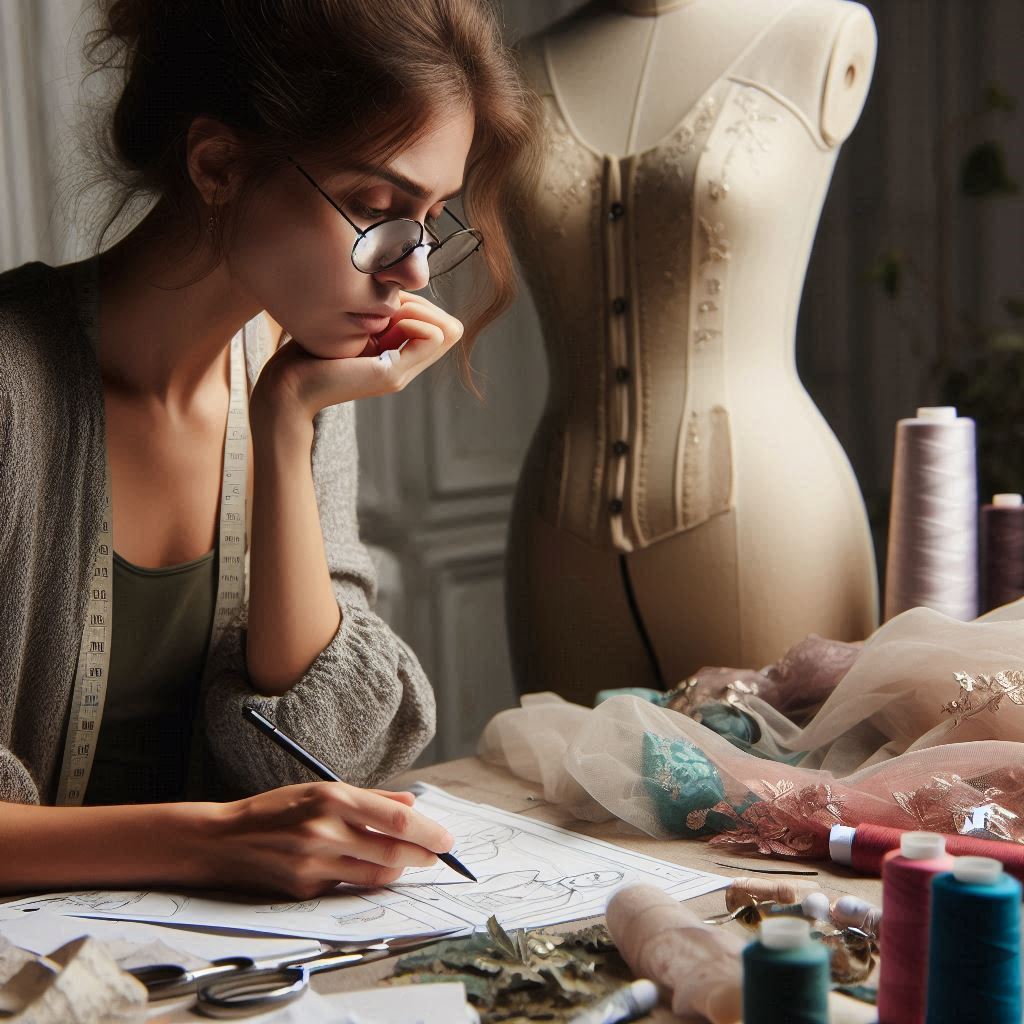Introduction
Costume design plays a crucial role in film, theater, and fashion.
Designers help bring characters and creative visions to life.
Their work creates emotional impact and authenticity, shaping the audience’s connection to the story.
Costume designers must balance creativity with practicality, ensuring costumes fit both the character and the scene.
However, mistakes often occur due to time constraints or miscommunication.
These errors can disrupt the storytelling process or affect a production’s visual appeal.
Learning from these mistakes helps designers refine their skills and avoid future pitfalls.
This blog post will explore common costume design mistakes and how to learn from them.
Examples of Famous Costume Design Mistakes in Film and Theater
When it comes to costume design in film and theater, mistakes can have a significant impact on the audience’s perception of the characters and storyline.
Let’s take a look at some famous examples of costume design mistakes that stood out for their historical inaccuracies or unrealistic choices:
Titanic (1997)
While the film is known for its attention to detail, there was a notable error in one scene where Rose’s character wore a gown with a zipper.
Zippers weren’t widely used until the late 1910s, whereas the film is set in 1912.
This error, although seemingly small, detracted from the overall historical accuracy of the film and drew attention away from the storyline.
Gladiator (2000)
In this epic historical drama, there was a scene where Maximus (played by Russell Crowe) is seen wearing a wristwatch under his armor.
This obvious anachronism pulled viewers out of the ancient Roman setting and caused confusion among the audience, diminishing their immersion in the story.
The Crown (TV series)
The popular Netflix series depicting the reign of Queen Elizabeth II faced criticism for historical inaccuracies in its costume design.
In particular, there were instances where characters were shown wearing hairstyles and outfits that were not appropriate for the time period, leading to a lack of authenticity that affected the audience’s believability in the characters.
Shakespeare in Love (1998)
This film, set in the Elizabethan era, featured costumes that were praised for their intricate detail and authenticity.
However, there was one slip-up in a scene where a character wore a bra underneath her dress, a garment that obviously did not exist during that period.
This mistake, while subtle, showcased a lack of attention to historical accuracy that could have been avoided.
Transform Your Career Today
Unlock a personalized career strategy that drives real results. Get tailored advice and a roadmap designed just for you.
Start NowLes Misérables (2012)
In the film adaptation of the famous musical set during the French Revolution, there were noticeable inaccuracies in the costumes worn by the characters.
Some outfits seemed too clean and well-maintained for a time of hardship and unrest, which undermined the gritty and realistic portrayal of the era.
This oversight lessened the impact of the story’s themes and detracted from the audience’s emotional connection to the characters.
In each of these examples, costume design mistakes, whether through historical inaccuracies or unrealistic choices, had a tangible effect on the audience’s perception of the characters and storyline.
By learning from these errors, costume designers can strive for greater authenticity and attention to detail in their work, enhancing the overall viewing experience for audiences.
Read: Understanding Fabrics in Costume Design
Importance of Attention to Detail in Costume Design
Costume design requires more than just creativity; it demands a keen eye for detail.
Small elements can transform a character’s look or completely miss the mark.
When costume designers overlook details, the authenticity of the character suffers.
How Small Details Can Make or Break a Character’s Look
The smallest features—buttons, fabric patterns, or accessories—can impact a character’s believability.
A medieval warrior wearing modern shoes, for example, can disrupt the immersion of the audience.
Costumes that reflect a character’s personality, background, or time period bring them to life.
Mismatched colors or inappropriate fabrics can confuse the audience and break the illusion.
To ensure success, costume designers must consider every aspect, from head to toe.
Even a misplaced accessory can shift the perception of a character.
The devil is in the details, and those details can make or break the overall costume.
Tips for Ensuring Accuracy and Authenticity
- Research thoroughly: Study the character’s time period, setting, and lifestyle. Historical accuracy or cultural representation plays a vital role.
- Work closely with the director: Ensure you understand the vision for the character. Discuss any special design elements.
- Test the costume in real life: Make sure it functions as intended. Check for comfort, mobility, and practical use in action scenes.
- Examine the fabric: Choose materials that match the character’s environment and status. The right fabric tells a story.
- Focus on color schemes: Colors can symbolize a character’s mood or role. Ensure they align with the overall theme.
In fact, mastering the details in costume design ensures that the character looks authentic.
By paying attention to small elements, costume designers can enhance storytelling and elevate the entire production.
Read: Best Software for Digital Art: A Comprehensive Guide
Role of Research in Costume Design
Research plays a crucial role in the process of designing costumes for films, theater, and other performances.
Transform Your Career Today
Unlock a personalized career strategy that drives real results. Get tailored advice and a roadmap designed just for you.
Start NowIt provides a solid foundation for creating authentic and visually appealing costumes that enhance the overall production.
Here are some reasons why thorough research is essential in costume design:
Emphasis on Thorough Research
- Research helps costume designers understand the historical context of the production.
- It ensures accuracy in portraying characters from different time periods or cultures.
- Research allows designers to explore new ideas and concepts for costume creation.
- It helps in making informed decisions on fabric choices, colors, and styles.
- Thorough research contributes to the overall credibility and authenticity of the costumes.
Resources and Strategies for Effective Research
- Utilize libraries, archives, and online resources to gather information on specific time periods or cultures.
- Study costume history books, fashion magazines, and art exhibitions for inspiration.
- Attend workshops, seminars, and classes to enhance your knowledge of costume design.
- Engage with experts in historical fashion or cultural studies for valuable insights.
- Experiment with different materials and techniques to expand your creative repertoire.
By investing time and effort into thorough research, costume designers can elevate their work to a higher level of artistry and storytelling.
It is through research that designers can avoid common mistakes and achieve success in creating memorable and impactful costumes for performances.
Read: How to Balance Creativity and Practicality

Addressing the Issue of Cultural Appropriation in Costume Design
Cultural appropriation in costume design occurs when elements of a marginalized culture are used without respect.
Designers may unintentionally appropriate symbols, patterns, or garments, causing harm to those communities.
The impact of Cultural appropriation on marginalized communities includes misrepresentation, erasure, and exploitation.
It reinforces stereotypes, often reducing cultural elements to mere fashion statements without context.
How Cultural Appropriation Impacts Marginalized Communities
- Erasure of cultural significance: Sacred or traditional attire loses meaning when removed from its cultural context.
- Reinforcing stereotypes: Misusing cultural elements can perpetuate false and harmful representations.
- Exploitation of cultures: Using cultural symbols without permission can feel like stealing identity.
Costume designers must recognize the importance of culture and approach their work with respect and understanding.
Promoting diversity and inclusivity in costume design avoids these pitfalls and fosters cultural appreciation.
Designers should engage in thoughtful research and consider collaborating with cultural experts.
How to Avoid Cultural Appropriation
- Conduct thorough research: Learn the history and significance of cultural elements before incorporating them into designs.
- Seek permission: Engage with members of the community when using their cultural symbols.
- Focus on collaboration: Work with cultural consultants or representatives to ensure respectful representation.
- Avoid stereotypes: Stay away from clichés or caricatures that reduce cultures to shallow tropes.
- Be mindful of power dynamics: Understand how your background may influence your design choices and their impact on other communities.
Promoting diversity and inclusivity in costume design ensures respectful representation.
Designers can celebrate cultural richness without appropriating or exploiting it.
By prioritizing authenticity and awareness, costume designers can create work that honors all cultures while fostering inclusivity.
Significance of Collaboration in Costume Design
When it comes to costume design, collaboration plays a crucial role in the success of a project.
Here are some key reasons why collaboration is significant in costume design:
Importance of Communication
Effective communication is essential when working on a costume design project.
Costume designers need to be able to clearly express their ideas and vision to other team members, such as directors, producers, and actors.
Without effective communication, misunderstandings can occur, leading to mistakes in the design process.
Transform Your Career Today
Unlock a personalized career strategy that drives real results. Get tailored advice and a roadmap designed just for you.
Start NowFor example, if a costume designer fails to communicate with the director about the time period or setting of a production, they may end up creating costumes that are completely out of place or historically inaccurate.
Teamwork between Costume Designers and Other Creatives
Costume designers often work closely with other creatives, such as set designers, hair and makeup artists, and lighting designers.
Collaborating with these professionals allows costume designers to create cohesive looks that complement the overall aesthetic of a production.
One successful collaboration in the industry is the partnership between costume designer Colleen Atwood and director Tim Burton.
Their work together on films like “Edward Scissorhands” and “Alice in Wonderland” has resulted in iconic and visually striking costumes that have become synonymous with Burton’s unique style.
Building on Each Other’s Strengths
Collaboration allows costume designers to leverage the strengths of their team members.
By working together, each person can contribute their expertise and insights to enhance the overall quality of the costumes.
For instance, costume designers may collaborate with costume makers who have specialized skills in certain techniques or materials, enabling them to bring intricate designs to life with precision and detail.
Enhancing Creativity and Innovation
Collaborating with others can spark new ideas and inspire costume designers to think outside the box.
By sharing perspectives and brainstorming together, creatives can push boundaries and create innovative designs that captivate audiences.
An example of a successful collaboration that resulted in innovative costume design is the partnership between costume designer Sandy Powell and director Martin Scorsese on the film “The Aviator.”
Powell’s meticulous research and attention to detail in recreating the 1920s and 1930s fashion contributed to the authenticity and visual impact of the costumes.
Fostering a Supportive and Creative Environment
Collaboration fosters a sense of camaraderie and teamwork among costume designers and other creatives.
By working together towards a shared goal, team members can provide support, feedback, and encouragement to one another throughout the design process.
Successful collaborations create a positive and dynamic work environment that allows costume designers to thrive creatively and produce their best work.
In general, collaboration is essential in costume design as it promotes effective communication, teamwork, innovation, and creativity.
By embracing collaboration, costume designers can create impactful and memorable costumes that elevate the overall production.
Read: How to Start a Career as a Digital Artist
Analyzing the Costuming Process from Concept to Execution
Costume design transforms concepts into captivating visual elements.
Understanding the steps and streamlining the process can prevent costly mistakes.
Transform Your Career Today
Unlock a personalized career strategy that drives real results. Get tailored advice and a roadmap designed just for you.
Start NowSteps in Creating a Costume Design
Research and Concept Development
- Begin with thorough research on the character and time period.
- Sketch initial ideas and gather inspiration.
- Define the costume’s role within the story and its significance.
Design and Fabric Selection
- Create detailed sketches of the costume.
- Choose appropriate fabrics and materials.
- Consider functionality, comfort, and movement.
Pattern Making and Prototyping
- Draft patterns based on the design.
- Create a prototype or mock-up using inexpensive fabric.
- Test fit and adjust patterns as needed.
Final Construction
- Cut and sew the final costume from chosen fabrics.
- Add details such as trims, embellishments, and closures.
- Conduct fitting sessions to ensure proper fit and functionality.
Fitting and Adjustments
- Perform fittings with the actor or model.
- Make necessary alterations based on feedback.
- Ensure that the costume allows for movement and comfort.
Final Touches and Quality Control
- Add finishing touches and inspect for quality.
- Check for durability and any last-minute adjustments.
- Ensure the costume aligns with the director’s vision.
Suggestions for Streamlining the Costuming Process
Plan Thoroughly
- Develop a detailed timeline and checklist.
- Allocate sufficient time for each step to avoid rushed decisions.
Communicate Clearly
- Maintain open communication with the production team.
- Clarify expectations and gather feedback regularly.
Use Efficient Tools
- Invest in quality pattern-making tools and sewing equipment.
- Utilize software for digital design and pattern drafting.
Create a Prototype
- Build a prototype to test design and fit before finalizing.
- Address issues early to avoid costly adjustments later.
Document and Review
- Keep detailed records of design decisions and changes.
- Review the entire process to identify and learn from mistakes.
Build a Reliable Team
- Collaborate with skilled professionals who understand your vision.
- Trust their expertise and delegate tasks to streamline the workflow.
By analyzing and refining the costuming process, designers can minimize errors and achieve stunning results.
A well-structured approach ensures that each costume enhances the narrative and meets the highest standards.
Conclusion
It is crucial to learn from costume design mistakes to improve future projects.
By reflecting on errors, we can enhance our skills and create better designs.
Avoiding common pitfalls, like improper fitting or inadequate research, can save time and money in the long run.
Embrace feedback and use it constructively to elevate your work.
Remember, every mistake is an opportunity to grow and refine your craft.
As you move forward in your creative endeavors, keep in mind the lessons learned from past missteps.
Apply these insights to your future projects to elevate your costume designs to new heights.




